Investing during this new Paradigm
June 2021
By Delft Partners
We have seen a range of increasingly interventionist monetary policies unleashed over the last 20 years, and we’re now solidly onto the next version. This one will be loose money and loose fiscal. Should be fun, as long as you are prepared for inflation. Inflation is now here. It really never went away. Hedonic methods of calculating what was already an imprecise gauge of price changes, have obfuscated, and of course lowered, the official figures. If you wish to see what pre-hedonic calculations would have gauged inflation levels to be today, check out the two charts below on inflation as per the 1990 methodology and the 1980 methodology. Both are by courtesy of shadowstats whose authors provide a plethora of ‘real’ economic data.
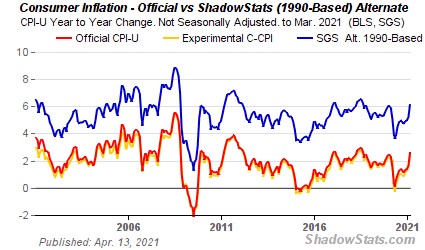
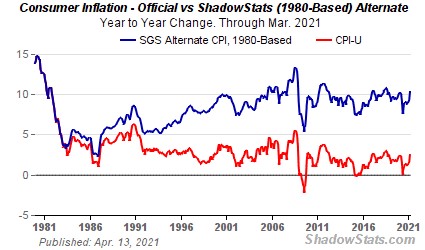
We now actually have an admission of sorts that inflation is here and, woops, higher than promised. Don’t wait for any apology. There won’t be one.
https://www.zerohedge.com/markets/yellen-admits-inflation-about-soar-says-it-will-be-plus-society
To be fair it’s not entirely the current Administration’s fault. The asymmetrical approach to interest rates, inflation and sound money in general, started with ‘Maestro’ and has snowballed since.
Nonetheless a perverse sort of Gresham’s Law is applying here – bad policies continue to drive out good. Inflation is the new good thing, and we should welcome it. Yet as Ronald Reagan said in 1978, “Inflation is as violent as a mugger, as frightening as an armed robber and as deadly as a hit man.”
Memories indeed are short. We are potentially near the end of the liberal era of economic policy with which Reagan and Thatcher were associated. Prepare for more government, more rules, and different risks.
Since none of us is going to be in charge of macro-economic policy (at least anytime soon) and we have to invest to maintain our spending power in real terms, against this backdrop of understated inflation and carefully massaged negative real interest rates, how should we proceed?
The answer is to invest in certain equities which are better inflation hedged and which simultaneously provide a better hedge against risk of catastrophic corporate failure.
Do not ignore equities even if you are at an ‘advanced age’. Conventional wisdom states that the allocation to fixed interest should rise as you get older. A rule of thumb is that you should have your age as a % in fixed income. So, at 60, you should have 60% in bonds. At current levels of interest rates and inflation, this will almost certainly guarantee an erosion in real purchasing power. Don’t do it!
Inflation and corporate failure hedges
Two dimensions should be used to assess which are the better equities to currently overweight if you wish to buy inflation protection. One is Governance as in the ‘G’ in “ESG” (We think ESG is still improperly used); the other is sector membership and the stability of revenue growth and asset base. Both have an impact on returns, downside protection and survivability.
Below we show how and why better Governed companies have a better survival rate and thus should have a lower discount rate applied to their dividends. These companies are still currently undervalued.
We then show that in the last 40 years, the risk of catastrophic loss in certain USA sectors has been much greater in some than others. Any investor with a time horizon beyond 5 minutes should thus weight their equity exposure to companies in these sectors.
We have written before on ESG and why we think G is relevant as a risk factor but not necessarily as an alpha factor. We show again below the wide range of ESG cores from different ESG ratings agencies, courtesy of Northfield. No alignment here which implies there is no single ESG standard that can be applied.
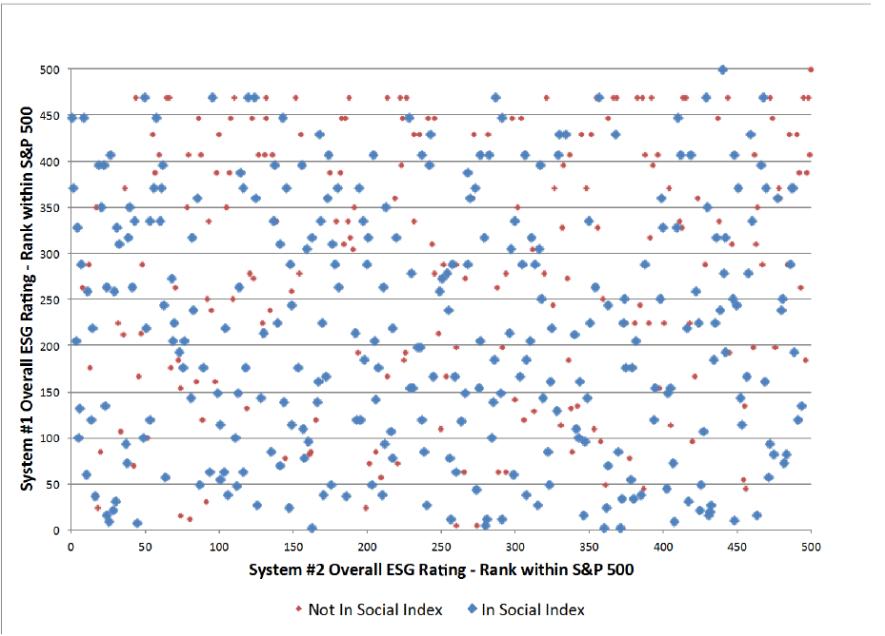
This article provides a recent assessment of ESG scores and how they are barely useful.
Nonetheless, good G as measured by its impact on corporate financials, IS useful. Sensible leverage, correct levels of re-investment, and staff retention are all part of any Fundamental or Qualitative assessment in deriving the correct discount rate to apply to a companies’ future earnings. Good G can justify lower discount rates through higher survival rates, and thus lower risk.
Below is some analysis of the performance of high G companies in a crisis. Think of it as built-in downside protection to favour high G companies.
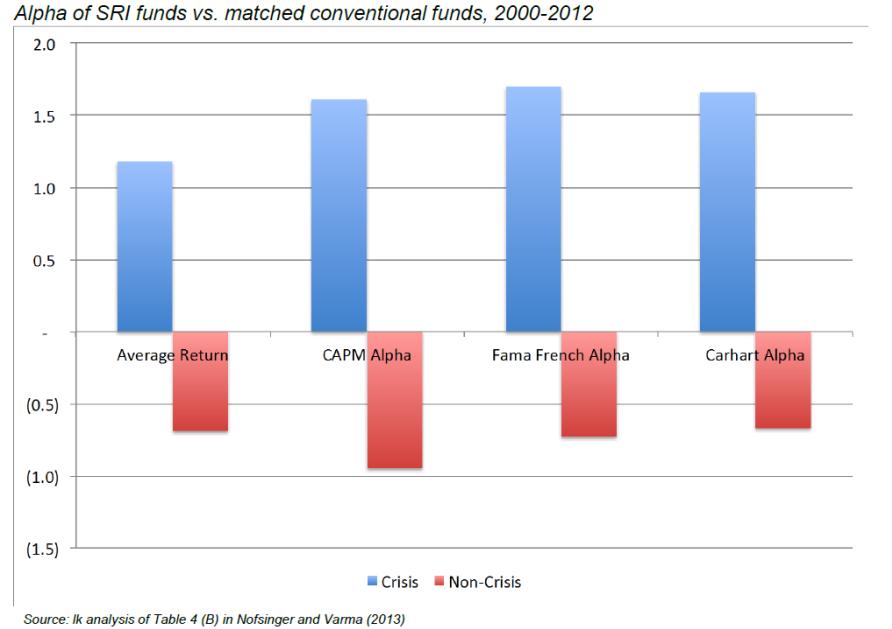
Sector membership matters too with respect to survival rates. Most companies do not last. Many companies fail and will continue to fail. Go back and watch any sporting event from 40 years ago. How many of the companies on the advertising billboards are still around today?
What really hurts compounding of returns is a catastrophic loss of capital; it only takes a few stocks to seriously fall for the poorly designed portfolio to suffer serious damage. So how to avoid this risk, and not expose your wealth to risk of failure? Check out the table below drawn from Factset and Refinitiv data.
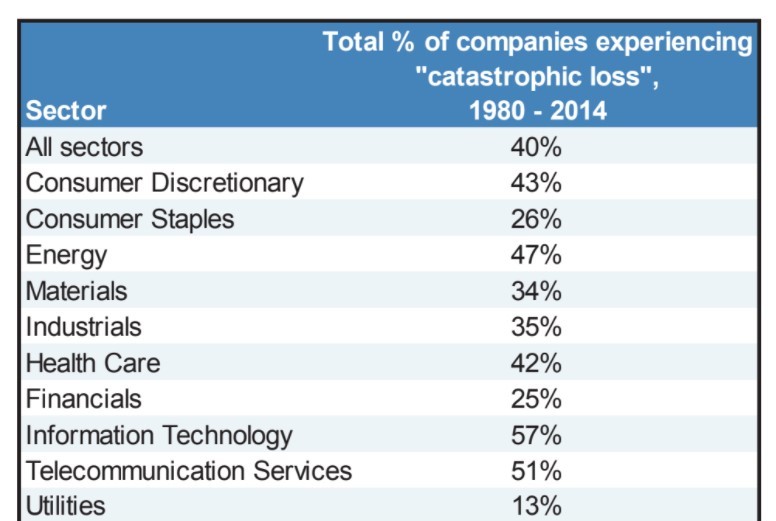
So, a 70% decline in price aka catastrophic loss, hurts 40% of all listed USA stocks. However, some sectors have historically seen more casualties than others.
If you wish to be safer, especially at this juncture, then look within Utilities, Consumer Staples, Financials Materials and Industrials. By market cap these comprise much less than half of the stock market so active management will prove its worth here.
Companies meeting these two criteria of good G and sector membership, are priced and behave as “index linked corporate bonds”. In this regard they are unique. They provide a decent yield compared to the pitifully low or even negative rate on ‘safe’ government bonds and the current yield on index linked bonds, which of course is negative; AND they offer a measure of hedge against inflation since equities are a claim on nominal growth which conventional bonds are not. Index Linked bonds do provide a hedge against inflation but with negative yields, they are expensive. Buying an index linked bond with a negative yield of 1.5% and not a utility company with a dividend yield of 4% is giving up annually, a 5.5% return.
Equities we own which meet these criteria are in the Global Listed Infrastructure Strategy and the Global Equity Strategy. They include AES, Quanta Services, Johnson Controls, OneOK, Enbridge, Terna, ENEL, Rubis, General Mills, Kroger, Iron Mountain, ENN, Hydro One and Verizon.
We view this as getting a yield in line with corporate bonds, AND the index linking of an inflation proof bond. These companies will have a greater chance of survival in the long run if history is a guide.
The chances of a macro policy misstep are now high, so this is the time to be thinking about survivor strategies.
Here is a slide of returns over the last 18 years accruing to equities, government bonds, infrastructure equities and blends of each. Even during this period of ‘growth’ equity excitement, one didn’t lose out too much by having exposure to defensive stocks in sectors with high chances of surviving a shock.
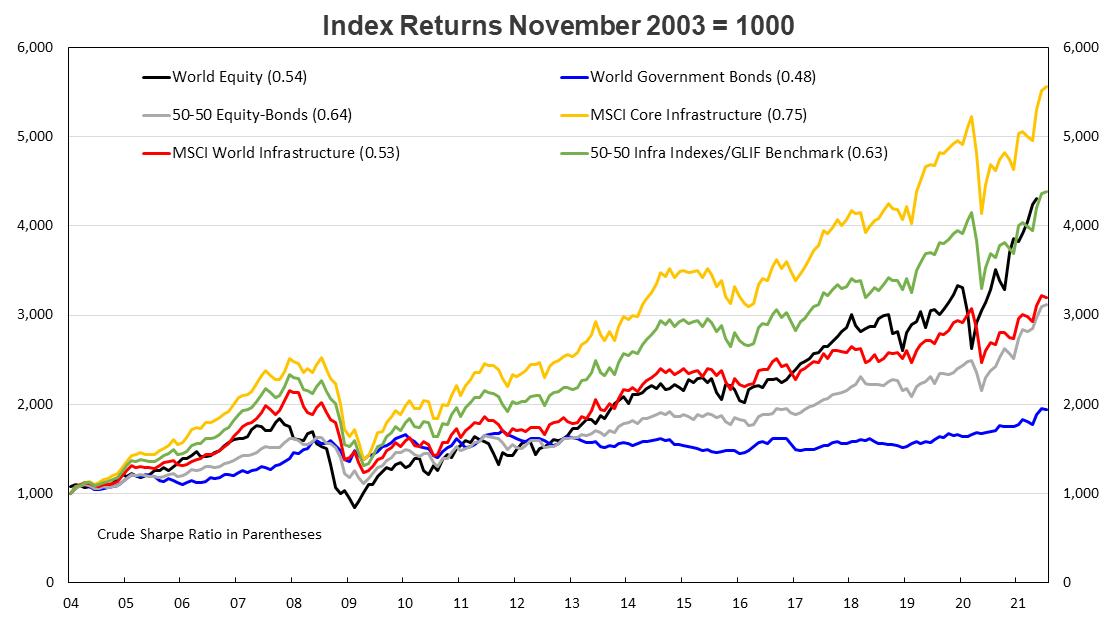
Currently therefore we are overweight Utilities, Infrastructure and Industrials. Given their superior survival characteristics, their lower P/E multiples and higher dividend yields they look attractive. Add in the likely buying frenzy to be unleashed as other investors scramble to get behind the newly discovered infrastructure spending plans in the USA and Europe, the best place to have risk would appear to be in these companies rather than the now very vulnerable to regulation, non-tax paying, non-voting share class issuing, expensive stocks of yesteryear.
The great thing about the stock market is that complacency, one trick ponies, and luck, get found out over time. Betting on price momentum with an absence of thoughtful, rigorous, analysis on valuations, risks, and portfolio construction tools and without any knowledge of long-term history, is a disaster waiting to happen.
Insights by Australian Fund Monitors Pty Ltd (AFM) provides investors and advisors with commentary and articles originated and provided by fund managers and other contributors. The views and opinions contained within each Insights article are those of the contributor and do not necessarily reflect those of AFM. www.fundmonitors.com.